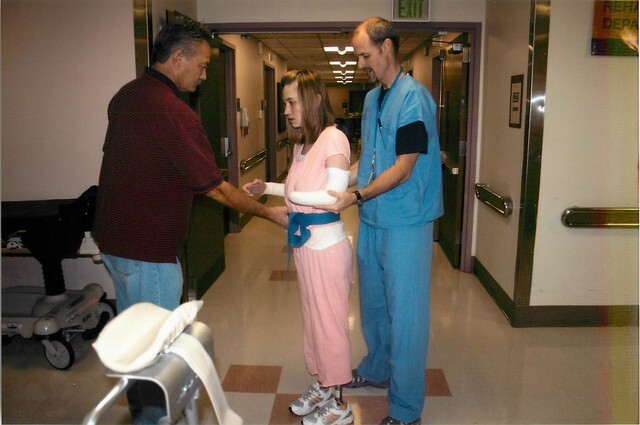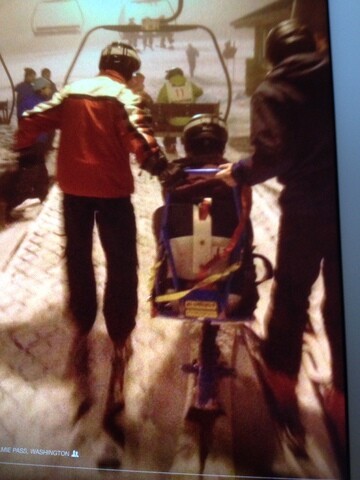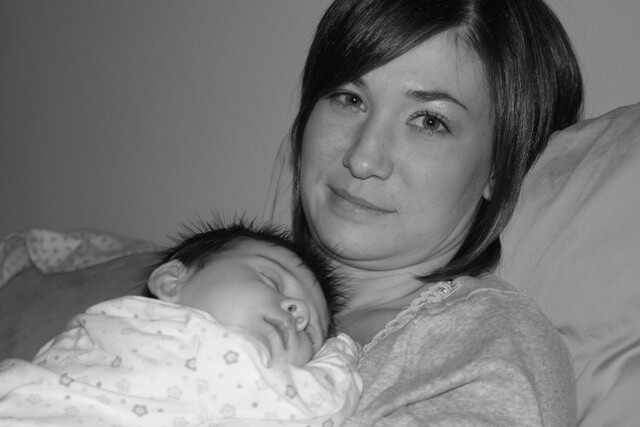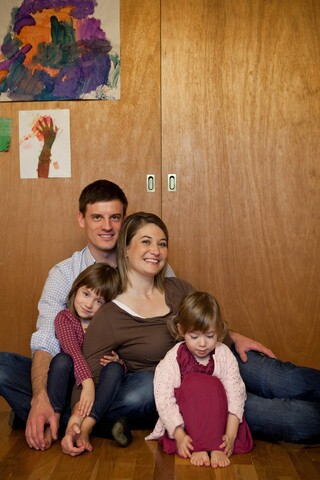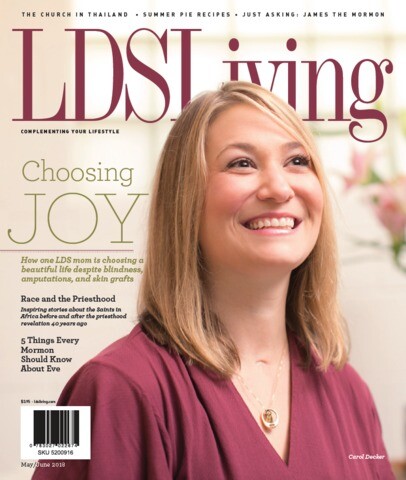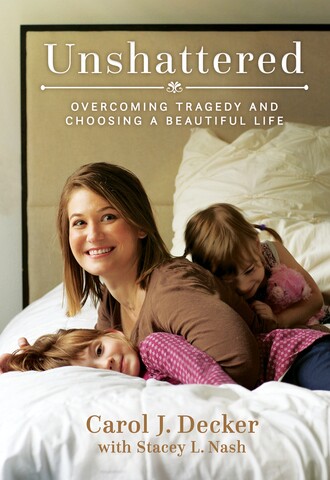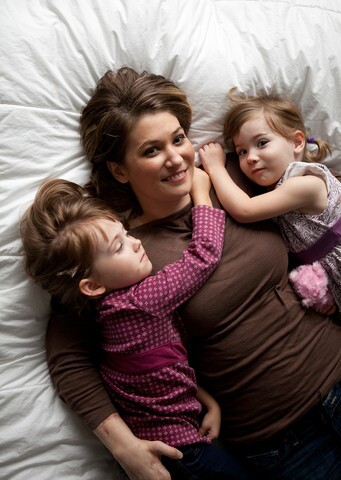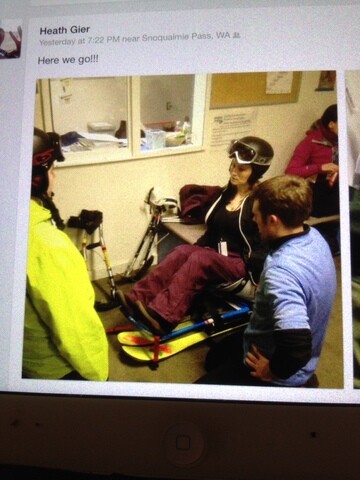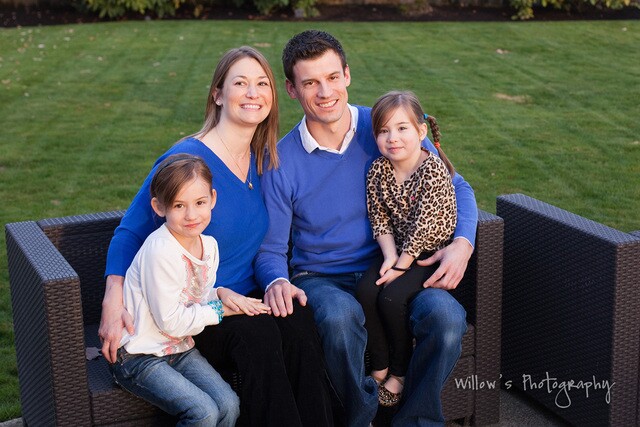When nurses rushed Carol Decker into an emergency C-section, she had no idea that it would be the last time she would see her husband, Scott. She had no inkling that her next conscious memories would come three weeks later, filled with hazy terror as intubation tubes left her temporarily voiceless and doctors amputated her lower legs, her hand, and her finger. She had no way of understanding that one moment would change her life, her family, and her relationship with God forever.
“I remember being in agonizing pain and having a fever at 103.7° F that we couldn’t get down,” Carol says of June 10, 2008—the day she began having contractions only 33 weeks into her pregnancy. With flu-like symptoms, Carol arrived at Swedish Medical Center in Seattle, Washington, confused by the early labor pains. The sharp smell of antiseptic mingled with the overwhelming labor pains as the medical staff pulled Scott into the corner of the room, talking in hushed voices. “The room just went silent,” she remembers. That’s when Carol learned she would need to undergo an emergency C-section. “It was just like the clock tower crashed, the glass went everywhere, and time stopped. As they wheeled me back, I never thought that would be the last time I would see my husband’s face.” For 20 days, time did stop for Carol, who remained in a drug-induced coma following the C-section as doctors frantically worked to save her life.
A Miraculous Meeting
Moments after the birth of her second daughter, Safiya, Carol was transferred to the ICU, and Safiya was whisked to the NICU. Within hours, doctors approached Scott with Carol’s diagnosis: sepsis—one word that did nothing to portray the life-threatening and life-altering struggles the family had yet to face. Doctors discovered Carol’s fever had been caused by strep and pneumonia, but the natural chemicals released in her bloodstream to fight the infection triggered inflammation and a cascade of complications, causing her body to shut down and begin decaying from the inside out. Within days, Carol’s kidneys stopped functioning, her heart failed to pump enough blood to her extremities, and blood clots began forming throughout her vessels, killing patches of skin. Fevers as high as 106.9° F racked Carol’s body as blood trickled from her mouth. Carol retains few memories of the first three weeks she fought to survive. “It was almost like I had amnesia for 20 days when I was in the drug-induced coma,” she says. Against the backdrop of vague blackness, pain, anxiety, and confusion, one memory stands out crisply in Carol’s mind—the night she met her newborn daughter for the first time. When Carol emerged from the heavy confines of unconsciousness, she became agitated, searching the room for Safiya even as intubation tubes kept her from speaking. Scott understood, however, knowing his wife would want to see their new daughter. Fearing this might be the only chance Carol had of meeting Safiya in this life, nurses in the ICU arranged for the preemie to be taken to her mother.
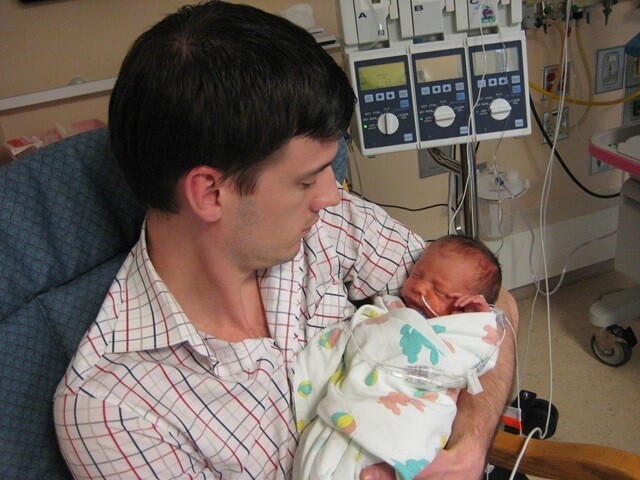
Carol's husband, Scott, holding Safiya, their newborn daughter
Scott introduced their daughter, and Carol remembers the velvety feel of Safiya’s skin against her own, delicate eyelashes brushing her cheek, and small fingers reaching for her nose and mouth. Then came a miraculous moment for the mother, who would later discover that sepsis had left her blind. “Tears fell as [Scott] brought us together,” Carol writes in her book. “Cheek to cheek. Mother to daughter. Soul to soul. The image of a dark-haired baby filled my mind. Whether it was really her or only my brain’s creation, I don’t know. And it doesn’t matter. It was enough.”
Light in the Darkness
Because of the lack of blood flow, Carol’s limbs and patches of skin discolored, turning a sinister shade of black from infections that further threatened her already tenuous life.
Faced with decisions that could save his wife’s life while irreversibly altering it, Scott felt he could not move forward without speaking to Carol. During semi-lucid moments when Carol would wake from unconsciousness, she and Scott discussed what needed to be done for her survival.
During the first surgery, doctors amputated Carol’s left foot just above the ankle and her right lower leg mid-calf. After further deterioration and a second surgery, Carol lost her left hand above the wrist and her right ring finger.
These developments “happened one at a time instead of all at the same time, so having some spacing was easier to digest mentally,” Scott recalls. “But as they accumulated, I definitely was thinking, ‘Oh, my gosh, how is this going to work? Are we doing the right thing for her?’”
Carol possesses only vague recollections of those 49 days she descended into darkness—a patchwork of terrifying and confusing memories.
“The first memory I have after my amputations was with my mom,” Carol shares. “She was cutting my fingernails, and I told her she missed a finger. She said, ‘No, I didn’t.’” Unable to see, Carol counted her fingers as her mom worked down her hand, insisting her ring finger had been missed. That’s when her mother began to cry.
“She got upset and said, ‘I thought Scott had told you,’” Carol remembers. “When you can’t see all the machines and you are so medicated that you can’t feel anything, it takes time for reality to settle in,” Carol says.
But, alongside the darkness, light also flooded Carol’s hazy memories. “My husband would come in and bring cards to read over and over of all the people who cared about me and loved me,” she remembers. “My brother Heath gave up his life and stayed by my bedside.”
As Scott struggled to hold his family and his new dental practice together while spending nights at the hospital with Carol, support from friends and family poured in from every direction. Carol’s brother Heath quit his job so he could stay with Carol, holding her hand before surgeries, staying nearby to soothe her anxiety when she woke, and helping her learn to breathe when suffocating pressure crushed her chest after her tracheotomy tube was removed.
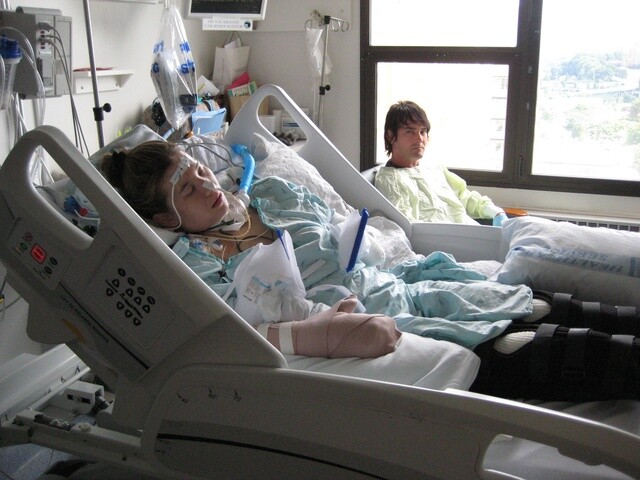
Carol recovering from her amputations
In addition, Carol’s father, stepmother, mother, and brother Shawn visited several times a week, sharing their courage and encouragement. “I tell everybody my support system is the most amazing in the world,” Carol says. “They just loved me and believed in me and kept telling me I would get better. No one ever let me think any differently.”
Though she was in a medicated coma and unable to respond, Carol remembers when her best friends from high school—Erica, Lisa, Kim, and Nicole—drove from Utah and parts of Washington to stay with her for several days, filling the room with laughter. “Carol was literally at death’s door,” Erica Thurston says. “Her body was wrapped in bandages. [She was] swollen and discolored. There was something inside of me that felt that Carol needed to know that we were there for her. The first thing I did was go to her side, press my cheek to her cheek, and whisper, ‘Carol, it’s Erica. I’m here, and I’m so sorry.’ With our heads inches from each other, I watched as a tear ran down her cheek.”
Entering the Abyss
After seven weeks, Carol was transferred to Harborview Medical Center to begin the most excruciating part of her treatment: receiving skin grafts on 30 percent of her body.
“Skin grafts were literally one of the most horrific things I have been through in my life,” Carol says. “It was just torture.” To make matters worse, the drug she took for pain created terrifying hallucinations and nightmares, deepening the debilitating depression and anxiety she was already experiencing. “I would imagine the worst things in my mind and see these experiences and imagine they were real,” she says.
This mixture of pain and psychological torment sent Carol spiraling into a mental abyss. “As a protection, I tried to shut down my emotions, numbing myself,” she shares. “I pushed everything out. Even hope. I didn’t die, but I ceased to live.” Left weakened and vulnerable from the skin grafts, Carol contracted a drug-resistant bacterial infection that again threatened her life.
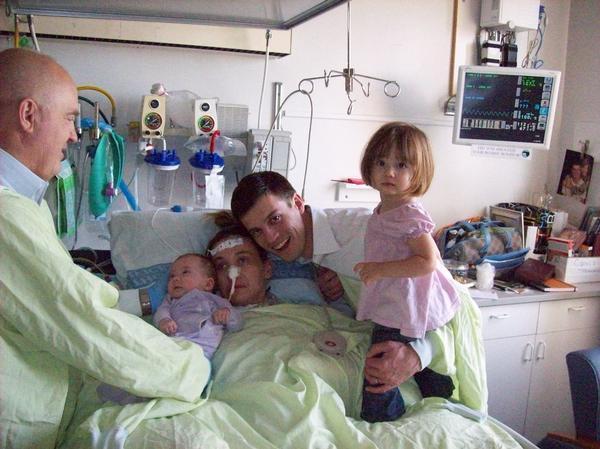
Carol's family visiting her in the hospital
“I had no control over my body or mind,” she writes. “That loss of power was more difficult than anything I had ever experienced.” Despite her inner turmoil, Carol continued to be “beautifully thoughtful” and mindful of those around her. “She would be lying in a hospital bed at Harborview going through the horrific procedure of skin grafts, and when I would call, she would answer the phone and, without skipping a beat, want to know how I was doing,” Thurston recalls.
After five more weeks of treatment, Carol was finally able to return home. But even in a familiar environment, she couldn’t find comfort. Without the help of nurses and with bed sores on her hips, an infection in her back, and braces on her legs, Carol quickly realized how weak and helpless she truly was. “I literally couldn’t move. I couldn’t pull my blanket up. I couldn’t do anything for myself. I just felt like a giant mummy in tremendous pain.” But the most heart-wrenching realization came when Carol interacted with her daughters. “When [my oldest daughter] Chloe would come to the hospital, she was so scared of me, and it bothered me so much because here I spent every day with her for years, my baby girl that I adored so much,” Carol says. “I love being a mom. It is absolutely my greatest joy and greatest accomplishment in life, and I would do anything for my daughters.”
Upon returning home, Carol was constantly confronted with the fact that her 2-year-old was terrified of her and that she couldn’t hold her newborn without pain radiating through her arms.
During this time, Carol’s older brother Shawn moved near the Decker family. “Shawn was very endearing and so kind. He was a gentle soul. He would do anything to watch over me and protect me,” Carol says. At her darkest moment, Carol remembers Shawn coming to her, asking if she needed anything. “I said, ‘Yeah, you can get me a gun.’ I didn’t see a way out at that point. In the weeks after I came home, everything just came crashing down on me.”
“Carol, we are not gonna go there,” Shawn replied, kissing her forehead and telling his sister that when she healed, he would swim in the ocean with her, take her on adventures, and help her accomplish whatever she wanted in life.
Shortly after she returned home, Carol’s hometown of Enumclaw, Washington, held a fundraiser for her, renewing her hope. “When they wheeled me into [the fundraiser], there were 5,000 people there, and they all stood up and started clapping for me. I couldn’t believe complete strangers were doing this for me and my family,” Carol says. “You think, ‘Oh, my gosh, I have to raise my children in this world that is so bad,’ but then you go to something like that and you [realize] there is so much love and so much goodness.”
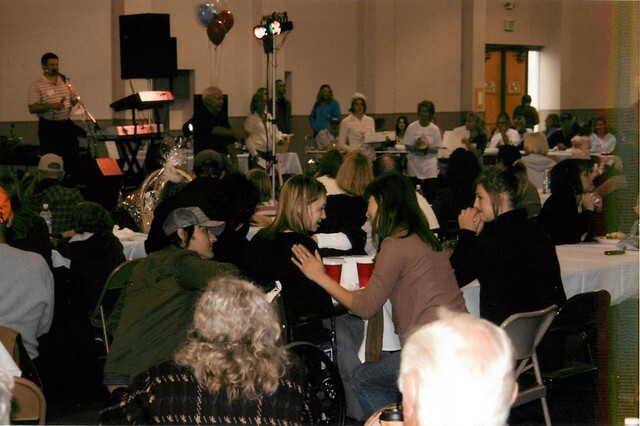
Carol at the fundraiser held in her honor
The Deepest Loss
Two weeks after returning home, an opening unexpectedly became available for Carol to begin inpatient rehabilitation. Once again, Carol was uprooted and thrust into a strange new environment
—one that challenged her limits but also brought a new sense of empowerment. Seeing Carol’s strong connection with her children, the physical therapists began tailoring her rehab around activities that would allow her to care for her daughters. “They knew that I would do anything for them,” Carol says.
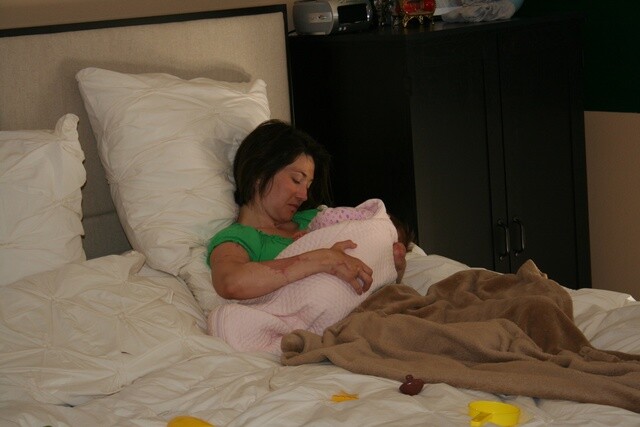
Carol holding baby Safiya
But during Carol’s third full day in rehab, her world shattered yet again when Heath visited her with unthinkable news: Shawn’s heart had stopped suddenly the night before.
“I worshipped my brothers,” Carol says. “Shawn was a beautiful person. The two weeks when I was home before he died, he was by my side every day and would pick me up and carry me to the toilet and would come and sit by my bedside and cry with me and wipe my tears and kiss me on my forehead and put his hands on my face.” And now he was gone.
For the first time in years, Carol prayed to her Heavenly Father, begging to know why she still lived while her brother was dead. Though she had drifted away from Church activity in college, as she prayed alone in the rehab center that night, Carol remembered the feelings she had as a young woman, knowing “God was real, and, if I prayed, He would watch over me.”
“Losing my brother is one of the hardest things I’ve done. I don’t miss my feet; I don’t miss my sight—I miss my brother,” she says. She now recognizes, however, the new purpose Shawn’s life and death gave her. “There was this beautiful gift that he gave me. He gave me a chance to pray and to know what my meaning was. Looking back, I realized my mom needed me and my brother Heath needed me and that I was important.”
Finding Faith Again
Although Carol found a renewed relationship with her Heavenly Father the first night she prayed in the rehab center, her faith developed much like her new abilities—step by step, precept upon precept.
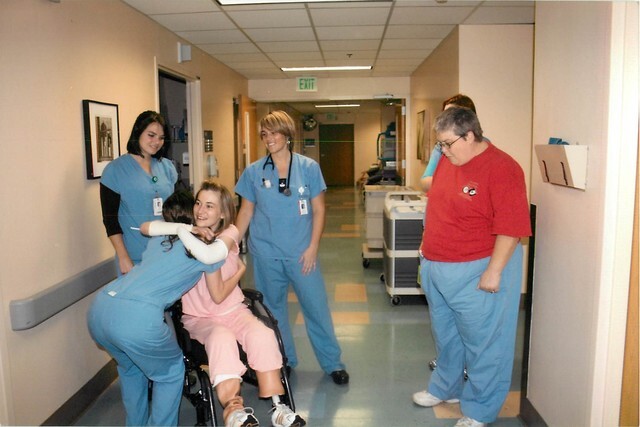
Carol hugging one of her nurses in rehab
“It didn’t happen right away,” she says. “I just remember starting to pray. I came home, and my home teacher at the time started visiting me, and the Church members started bringing me meals all the time. I mean, people just gave this outpouring of love constantly.”
Since Carol was unable to attend church in the beginning, priesthood holders went to her house to give her the sacrament, and her home teacher arranged for the missionaries to teach her at home.
“You kind of expect you’re going to have this Joseph Smith experience of total enlightenment,” Carol says. But she quickly learned her spiritual journey didn’t work that way. “For me, it was about putting the pieces back together and the lessons I learned when I was younger about eternal life. I wanted to see my brother again, and I wanted to see my children’s faces again—that’s my ultimate goal. The only way to achieve that was to come back to church.”
Carol’s faith continued to grow as she taught Primary and, later, Relief Society, committing her lessons to memory and devoting herself to serving others.
“I admire her willingness to go and do what the Lord has asked of her,” Thurston says. “I honestly don’t know if I could do what she has done and what she continues to have to do each day. But she does it. She lives her life beautifully.”
While her new faith has brought peace to Carol, initially it caused friction in her marriage with Scott, who no longer believes the teachings of the Church. “It wasn’t easy. I can honestly tell you that,” Carol says. “There were many nights where [we’d] just go back and forth with each other, and Scott would try to convince me, and I would try to convince him.”
Though it took years of adjustment and communication, the profound love Carol and Scott forged through their earlier trials helped them overcome the differences in their faith, leaving them with a deeper understanding of each other and a stronger marriage.
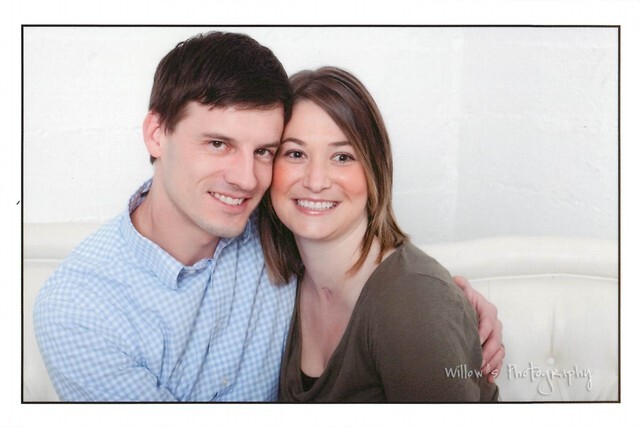
Carol and her husband, Scott
“What Carol has gone through has put her on a different path than me on this point,” Scott says. “I have always believed different people need different things to get through this life, and she has made it clear that she needs the LDS Church. I try to be as supportive as I can on that.”
“The first gift God gave us was our free agency,” Carol says. “I have to remember that. We all have a choice. Just like I had the choice whether I wanted to get up and work hard on my physical therapy and learn the things I need to gain my life back, it’s the same with my testimony.”
But Carol also knows she hasn’t been alone in her faith journey. “When my brother was taken off life support, my mom had someone come in and give him a blessing. In his blessing, it was said he would be my ministering angel. And there have been times when I have been at church and I feel Shawn is right next to me,” she says. “There are times I just see his face so clearly out of anyone else’s in my mind. He is always in my heart.”
Living Life Fully
It’s been nine years since Carol lost her sight, her feet, her hand, and the life she once knew. Nine years of physical therapy, prosthetics, canes, and relearning to feed herself, walk, and live again—step by agonizing step.
Looking at Carol’s life today, few could imagine the limits that once restricted her. Her journey “has been awesome and inspiring,” Scott recognizes. “She does things I could never do.”
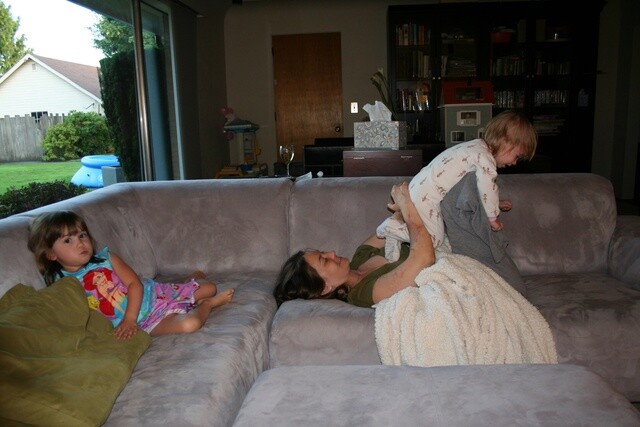
Carol playing with her daughters
Despite her indomitable attitude, Carol didn’t understand what she was capable of until the Deckers’s nanny and nurse, Erin, told Carol she was going to help her make cookies with her little girls. “You have this idea and these dreams of what you are going to do with your kids when you are a mom,” Carol says. “For me, making cookies was one of those things.”
Though she didn’t know how she would be able to roll out the cookie dough with only one hand—a hand severely limited by nerve damage—Carol remembers hearing Safiya banging happily on the table next to her and Chloe giggling.
“All of a sudden, Chloe takes her finger and is touching my nose and my face with flour on it,” Carol remembers. “It was just this magical moment. . . . I felt her little, tiny finger, and it was like a window opened, and the possibilities came streaming into my mind—I could do things with my kids. It didn’t matter that I didn’t make the dough. It didn’t matter that I didn’t put the cookies in the oven. We were together, and it was about the experience. That’s kind of what it’s like in this life. Sometimes we think so many things are so important or that we can’t live without [this or] that, but it is about the experience and what we make of it.”
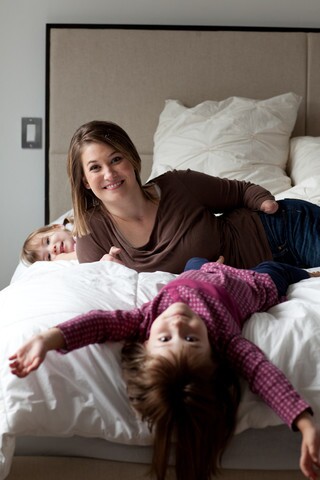
Carol and her daughters, Chloe and Safiya
Embracing that new flood of possibilities, Carol “gave everything that [she] had” to rebuilding her life, learning to put on her own makeup, walk in high heels, jump on the trampoline with her girls, do her hair, and care for her daughters.
“I didn’t want to miss out on anything with my kids,” Carol says.
“Carol was this strong, determined, fearless, selfless, beautiful, funny, genuine person before her incident, as she is now after it,” Thurston says. “She has not allowed this tragedy to define her but, in turn, is defining it by being who she is in spite of it. And she has not just endured it. She is conquering it. She makes everyone around her feel her joy of life.”
Always one to set audacious goals instead of limits for herself, Carol remembers the year Safiya turned 5. It was the year she promised her family they would all go snowboarding and skiing together—a hobby she has loved since she was 12 years old. With the help of a nonprofit organization called Outdoors for All, Carol tried her first sit-ski in 2013. Slightly offended that the volunteers had her test her abilities on the bunny hill, the true adventure began when the volunteers tried to help her onto the chairlift. The men lifted the sit-ski so high the lift hit the bottom of her skis, flipping her onto the top of her head. “I just started laughing because that is what I do in those situations,” Carol says. When the volunteers grew awkwardly quiet after their mishap, Carol assured them, “Okay guys, the worst thing that could have happened just happened back there, so I am glad we got that over with.”
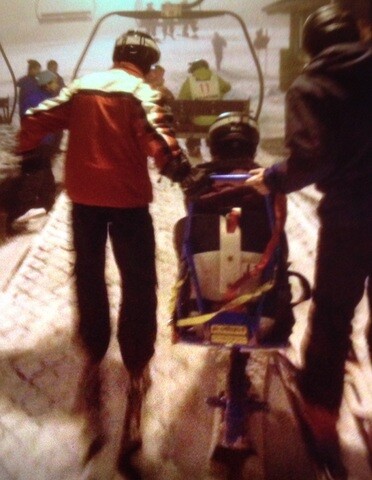
Carol hitting the slopes on her sit-ski
On Valentine’s Day 2014, Carol carved down the mountainside in her sit-ski, her little girls and Scott zipping by. “There was fresh snow, and it was just magical to me to hear my little girls ski by and go, ‘Hi, mommy,’” Carol recalls. Near the end of the day, after a wipeout sent Carol tumbling into the snow, she remembers breathing that moment in, hoping it would never end.
“It was just that moment of ‘I did it. I survived. I am on this mountain skiing with my family,’” she says. “Because that is what life is like. Sometimes you feel like you are held under the water, and sometimes you are up and riding the waves.”
Living Life Beautifully
In 2014, while at a fundraiser honoring her achievements, Carol reconnected with the doctor who originally diagnosed her with sepsis—a man who had last seen her clinging to life in the ICU.
While speaking with Dr. Solomon and his wife, Carol learned of the days he spent agonizing over her care, worrying what would become of her or whether she would survive. And here she was, just six years later, her life full of adventure, vivid sensations, boundless gratitude, love, and hope.
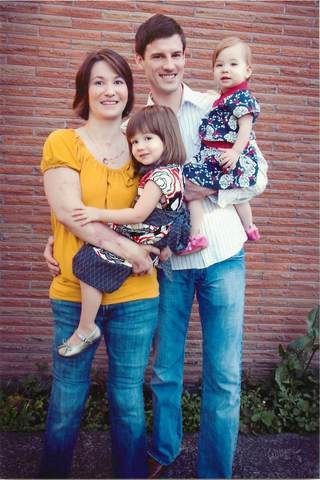
Carol and Scott with their daughters, Chloe and Safiya
“When I went to church the next day, I just couldn’t help but think of the way I felt thanking that doctor. I kept kissing him on the cheek and thanking him, and tears were streaming down my face. I couldn’t help but think what it was going to be like someday meeting the Savior, Jesus Christ, and to thank Him for everything He has done for us. I really didn’t know that He knew me personally until now,” Carol says. “There is no way I could get to this place without all the people in my life and especially without God seeing what I could do.”
Learn more about Carol Decker’s incredible story in her new book, Unshattered: Overcoming Tragedy and Choosing a Beautiful Life. More than a story of triumph over tragedy, the book offers inspiring life-lessons and insights which can help readers to do more than endure unimaginable pain and darkness in their own lives. This book can give them the perspective and strength to pick up the pieces of their own tragedies and choose a life of healing, purpose, and joy—a beautiful life.
Available at Deseret Book stores and at deseretbook.com.
Read more inspiring stories in our print magazine, available at Deseret Book stores and deseretbook.com.
Photos courtesy of the Decker Family

